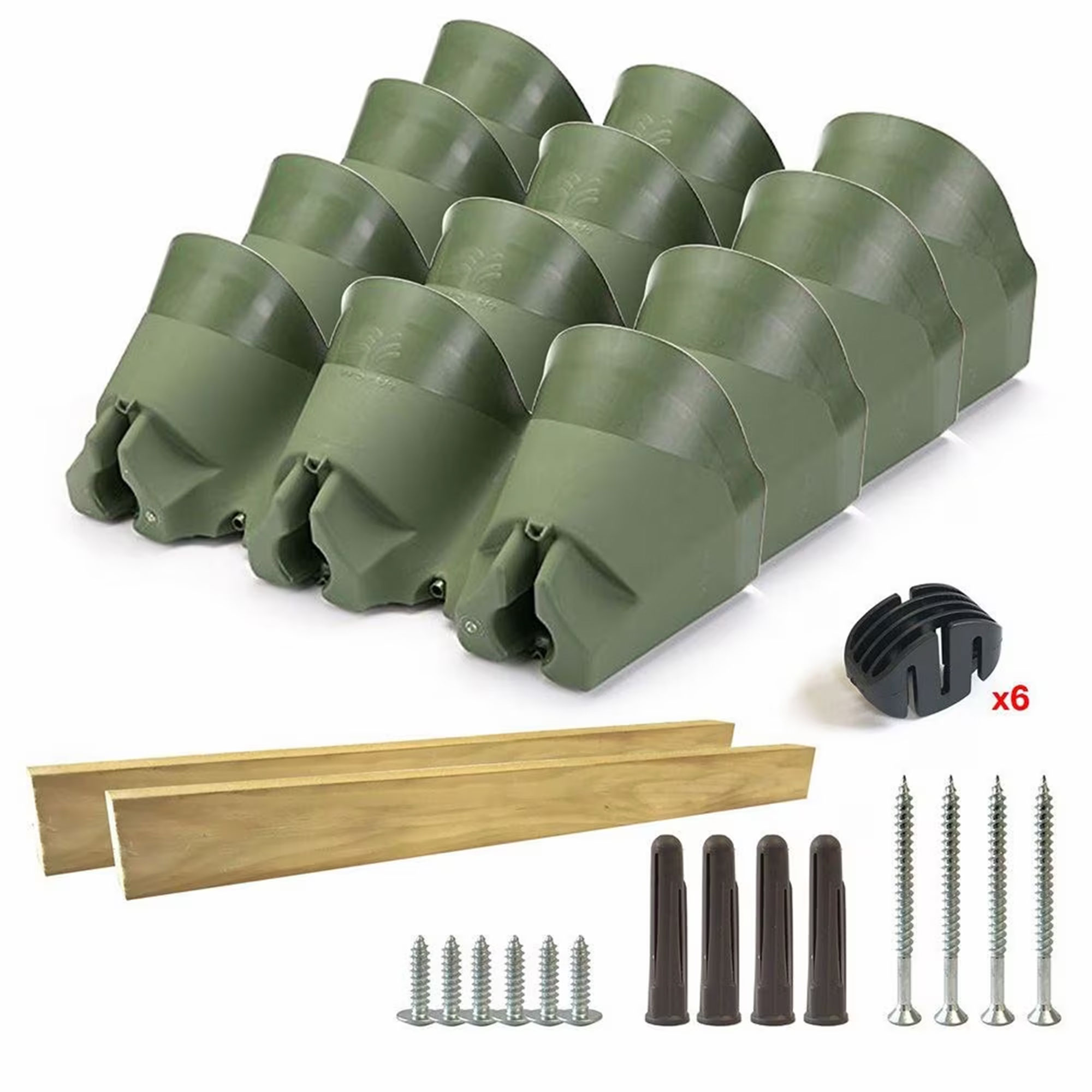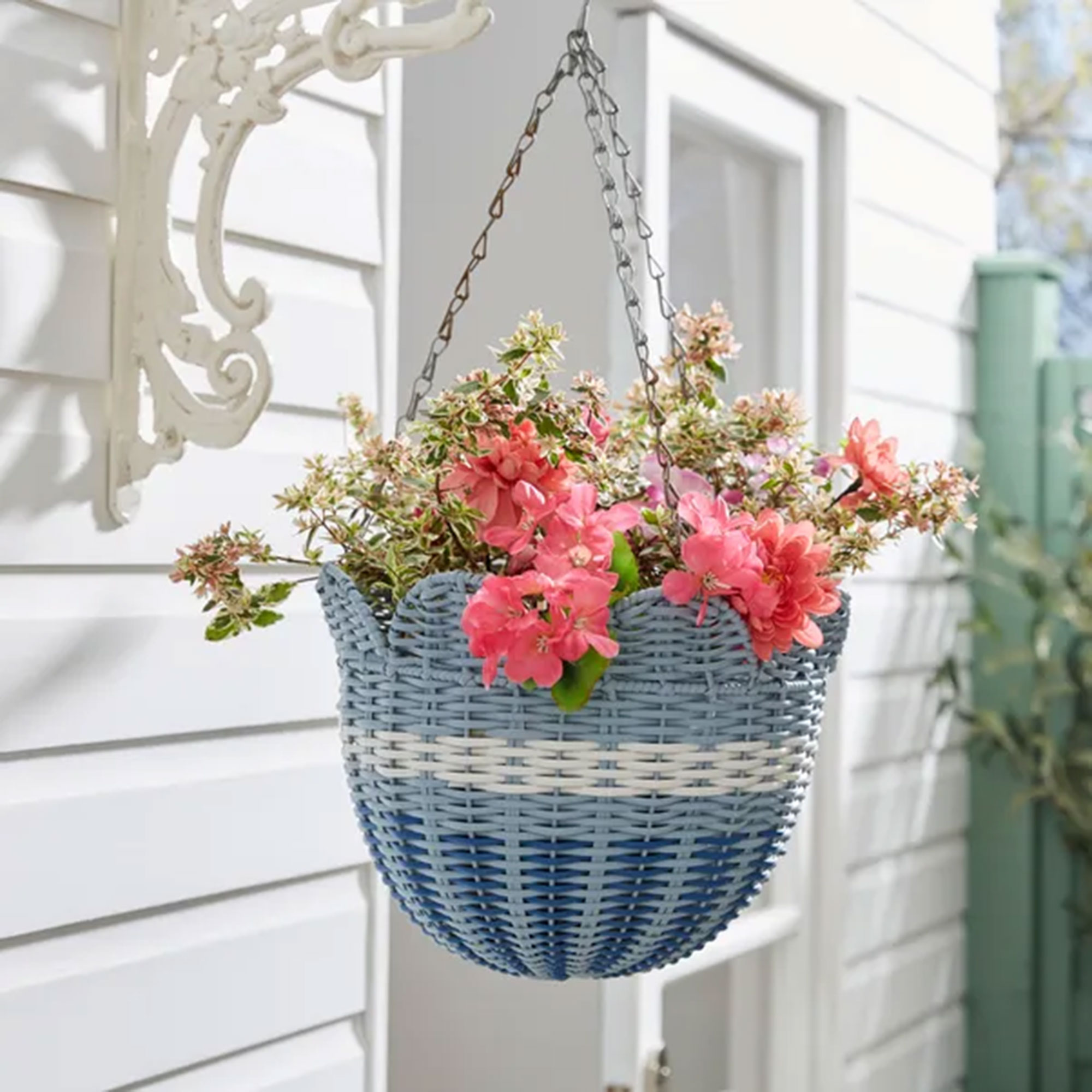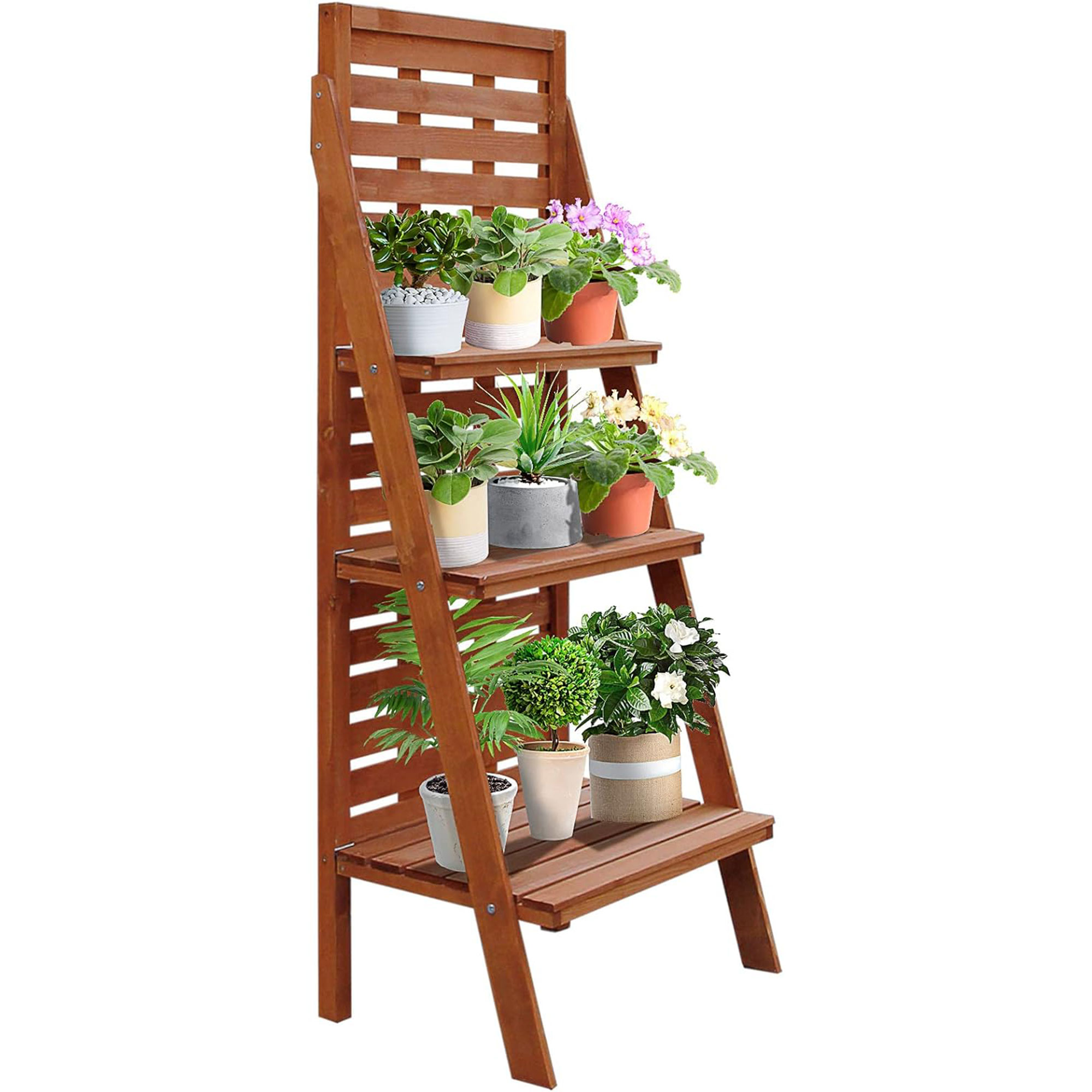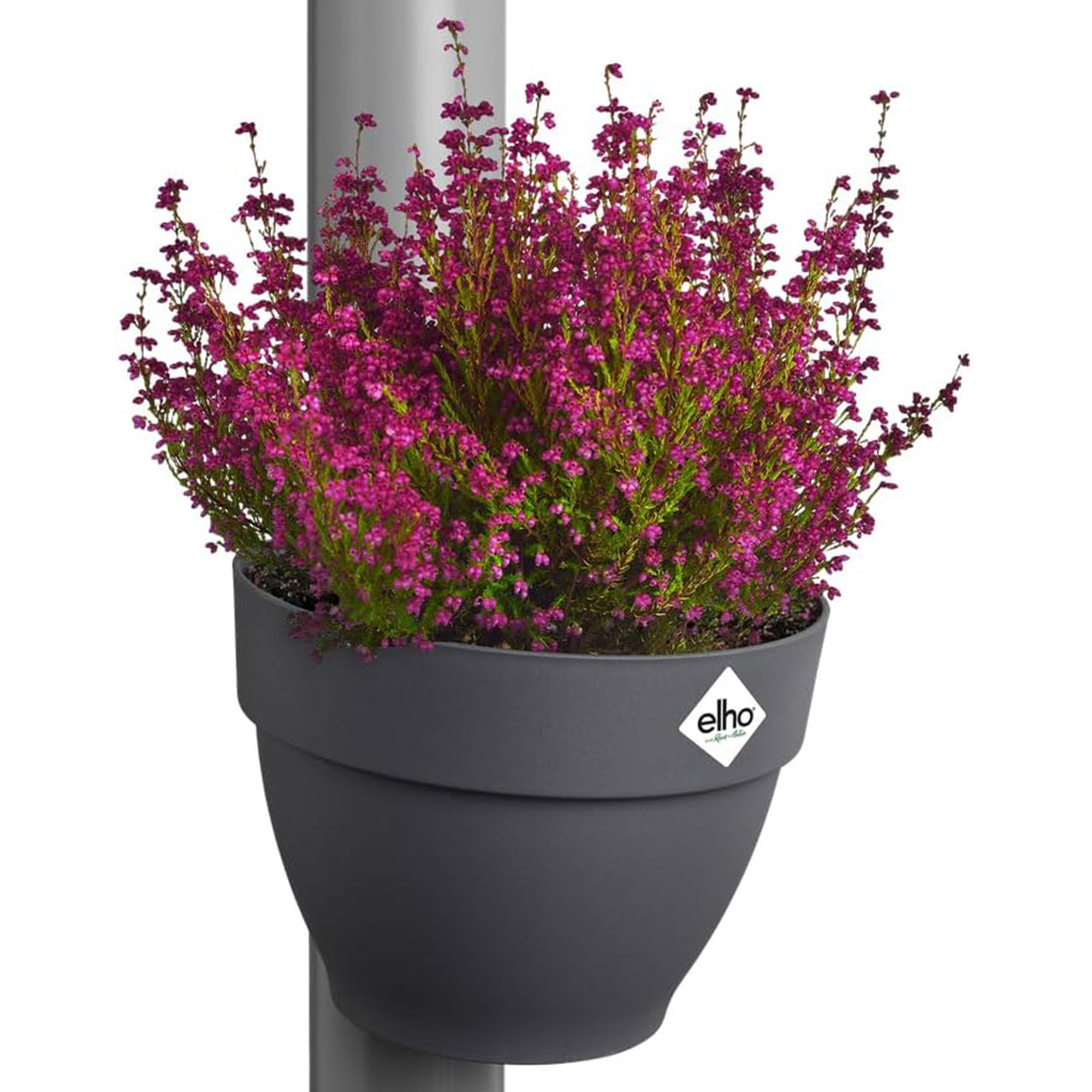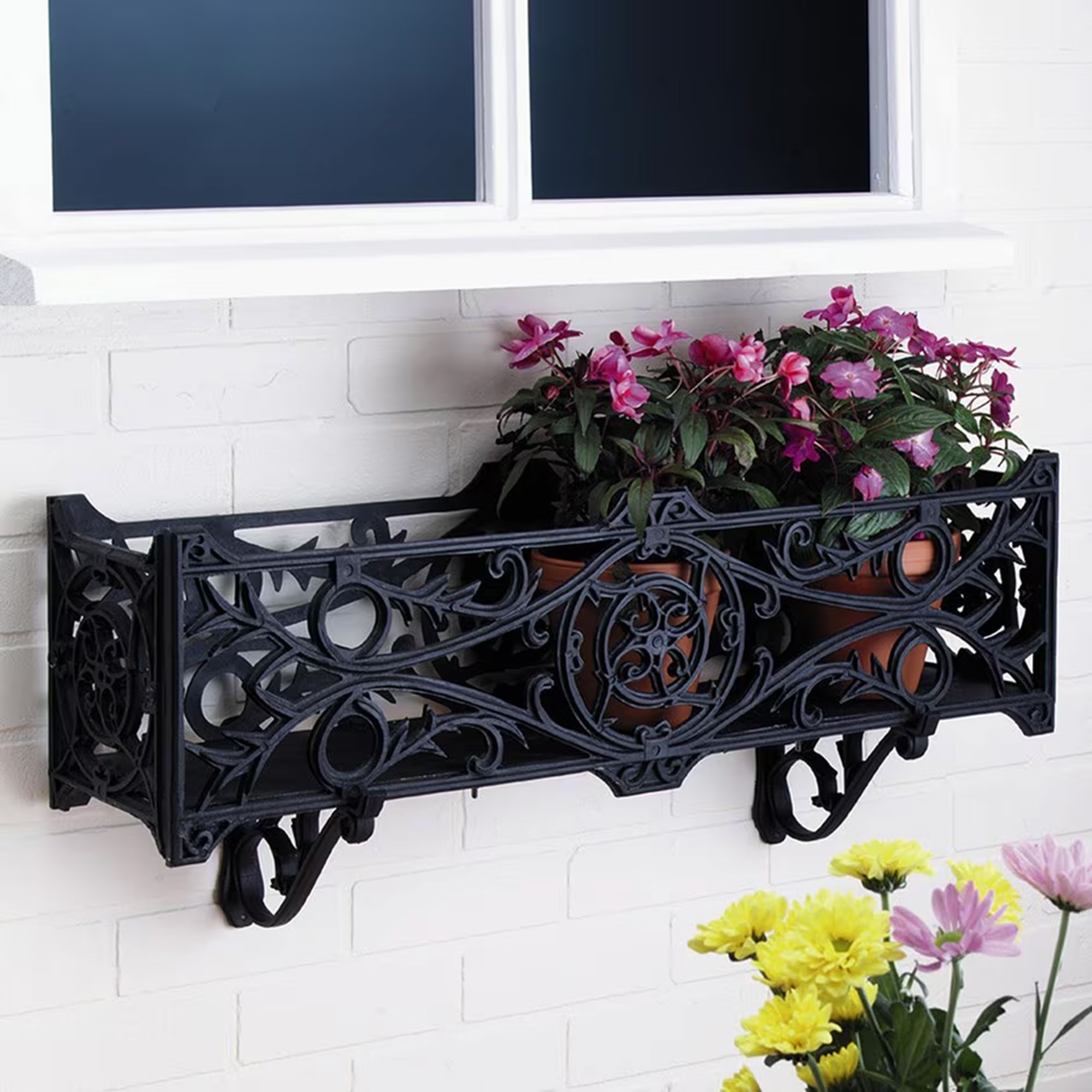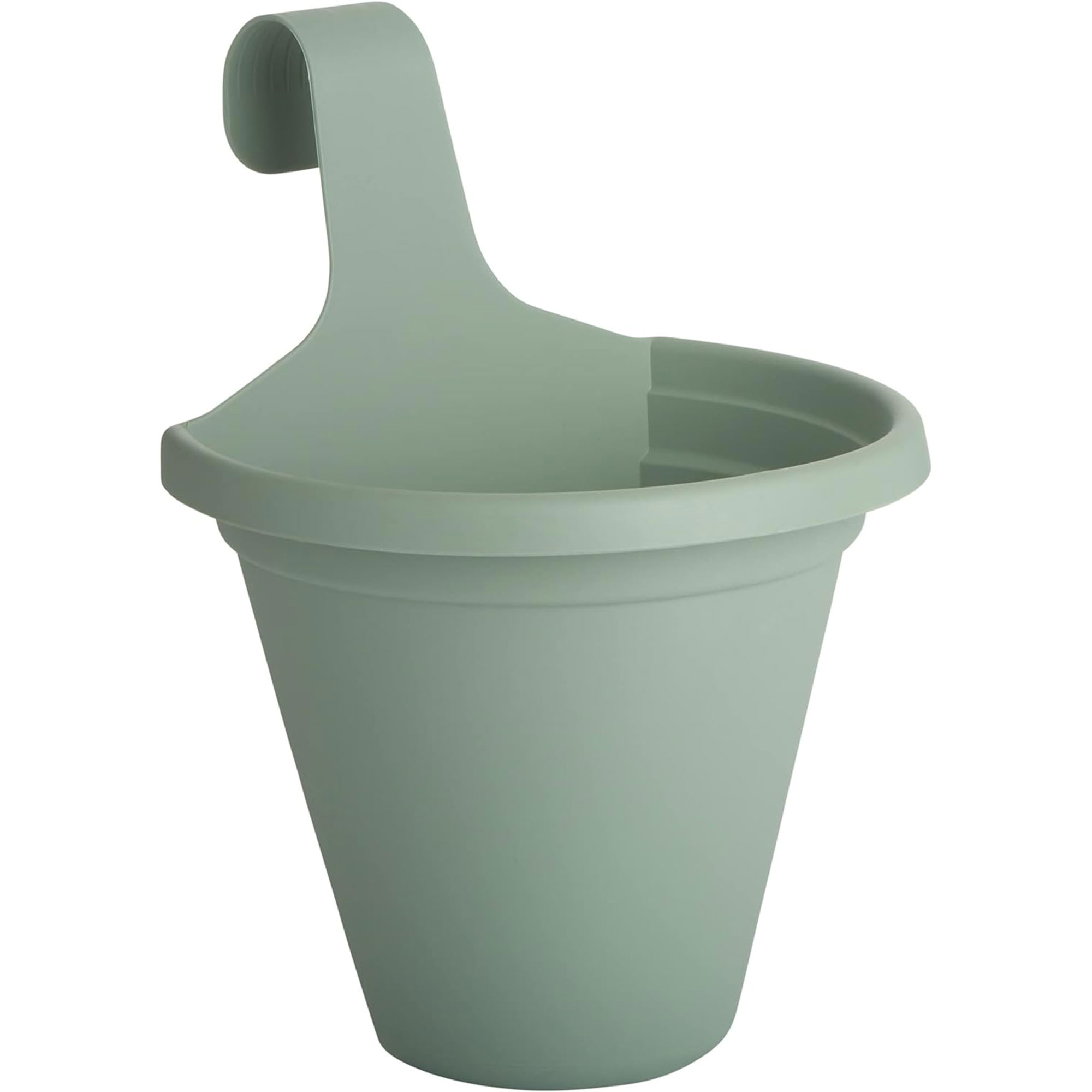11 small garden landscaping ideas to transform your outdoor space
Whatever its size, these are the ideas that the experts highly recommend
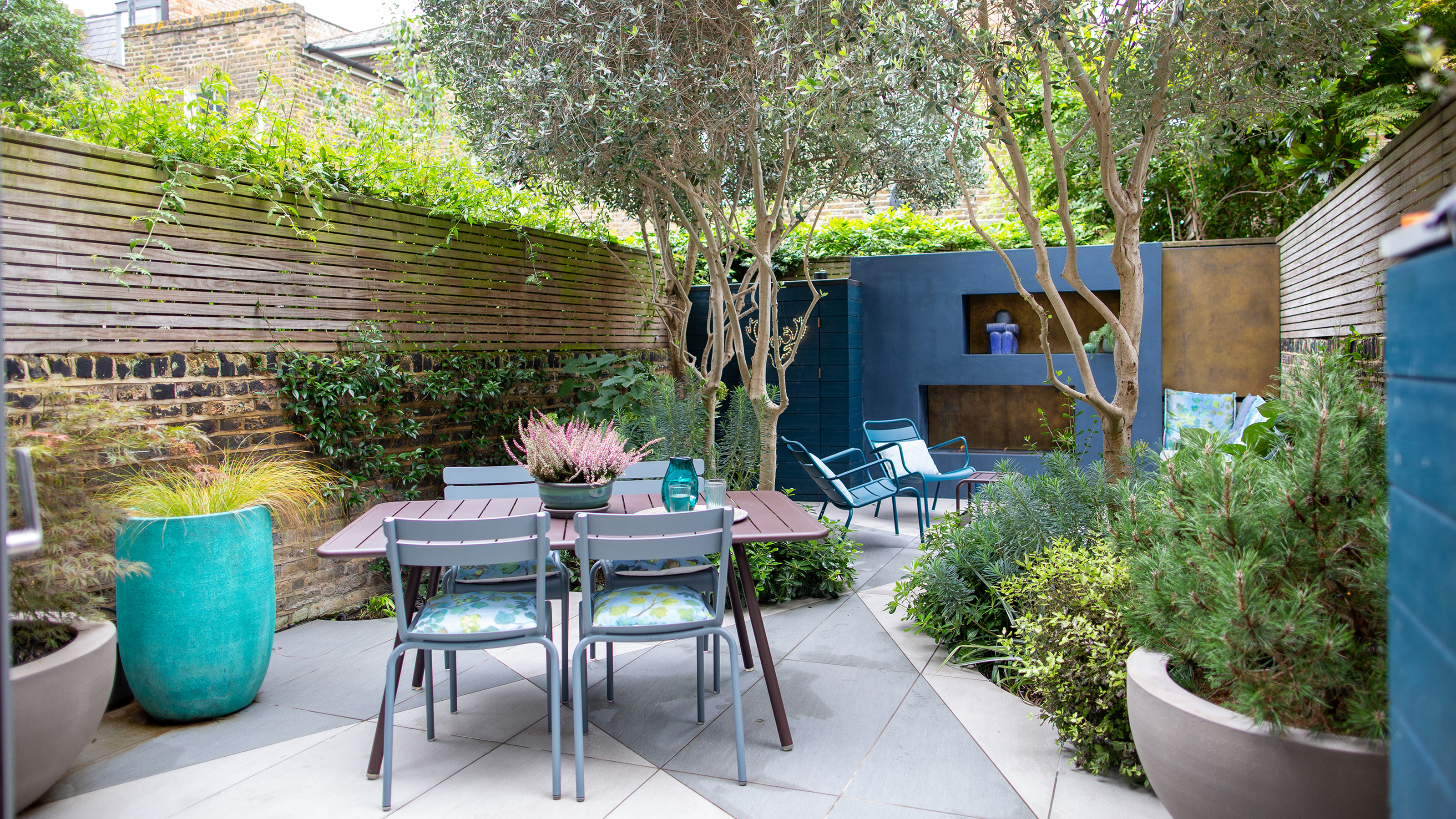

As we start to think about spending more time out in our gardens, you may have wondered how to get the most from your outdoor space. But what if you have a smaller garden or external footprint? Well, thankfully there are a number of small garden landscaping ideas which will work when space is at a premium.
Whether you’re looking to add colour and texture to your small garden or have space to relax and unwind, a limited amount of space doesn’t have to limit you or your garden landscaping.
No matter how small the area you have to work with is, it’s all about considering how to make a small garden look bigger to give you the garden of your dreams. While there are a number of small garden mistakes to avoid, there are plenty of options for those of us with smaller outdoor spaces, as the experts go on to outline below.
11 small garden landscaping ideas
There are actually a number of positives to having a small garden, such as it being lower maintenance and less costly to fill, compared to a sprawling green space. However, you might have thought that you would need to sacrifice what you’d ultimately be able to fit in it. But thankfully that’s not the case.
‘When planning the layout of a small garden, you should be looking to maximise the efficiency of any available space,’ explains Jamie Robinson, Installation Manager at Value Doors. Taking into consideration ‘the area's sunlight exposure and soil quality,’ is also important. But how do you go about landscaping a small garden? Keep reading to find out everything you need to know, regardless of your taste or budget.
1. Grow vertically
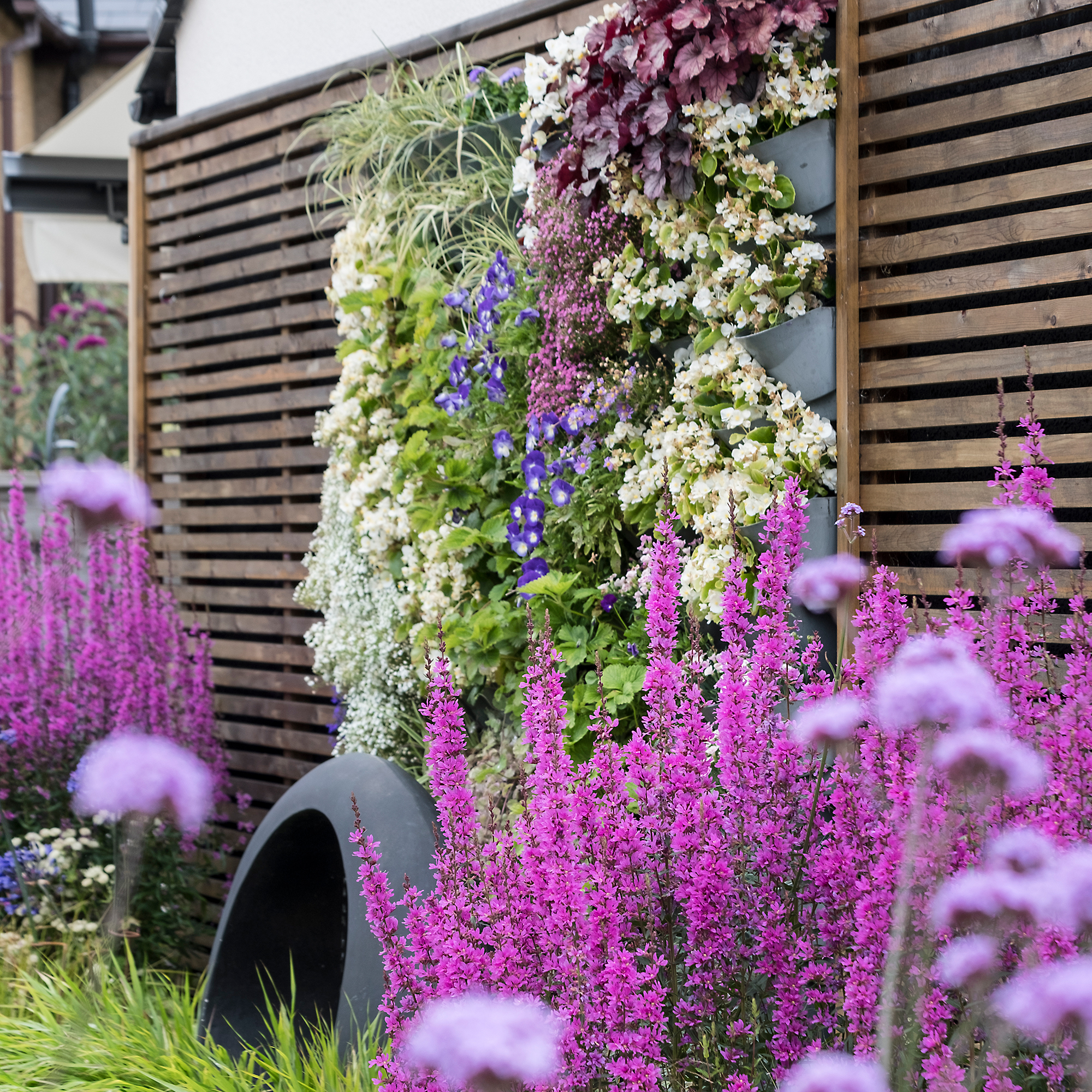
Just because you don’t have a lot of space on the ground doesn’t mean that you don’t have space to grow some of your favourite plants, shrubs and blooms. You just need to start thinking about vertical garden ideas to make use of areas that are unused or underutilised.
‘When your growing area is limited by the square metres of your garden, you can increase your greenery by including vertical spaces in the landscaping,’ explains MyJobQuote.co.uk’s Gardening Expert, Fiona Jenkins. ‘Not only will this soften the boundaries but it will double the number of plants you can grow.’
Sign up to our newsletter for style inspiration, real homes, project and garden advice and shopping know-how
‘Hanging baskets, tiered planters, and trellises help grow plants upwards, saving valuable ground space,’ DIY Expert and Owner of Saxton Blades, Glen Peskett, remarks. ‘Adding pergolas or archways can also give your climbers a beautiful backdrop to show off against.’
2. Fill empty space
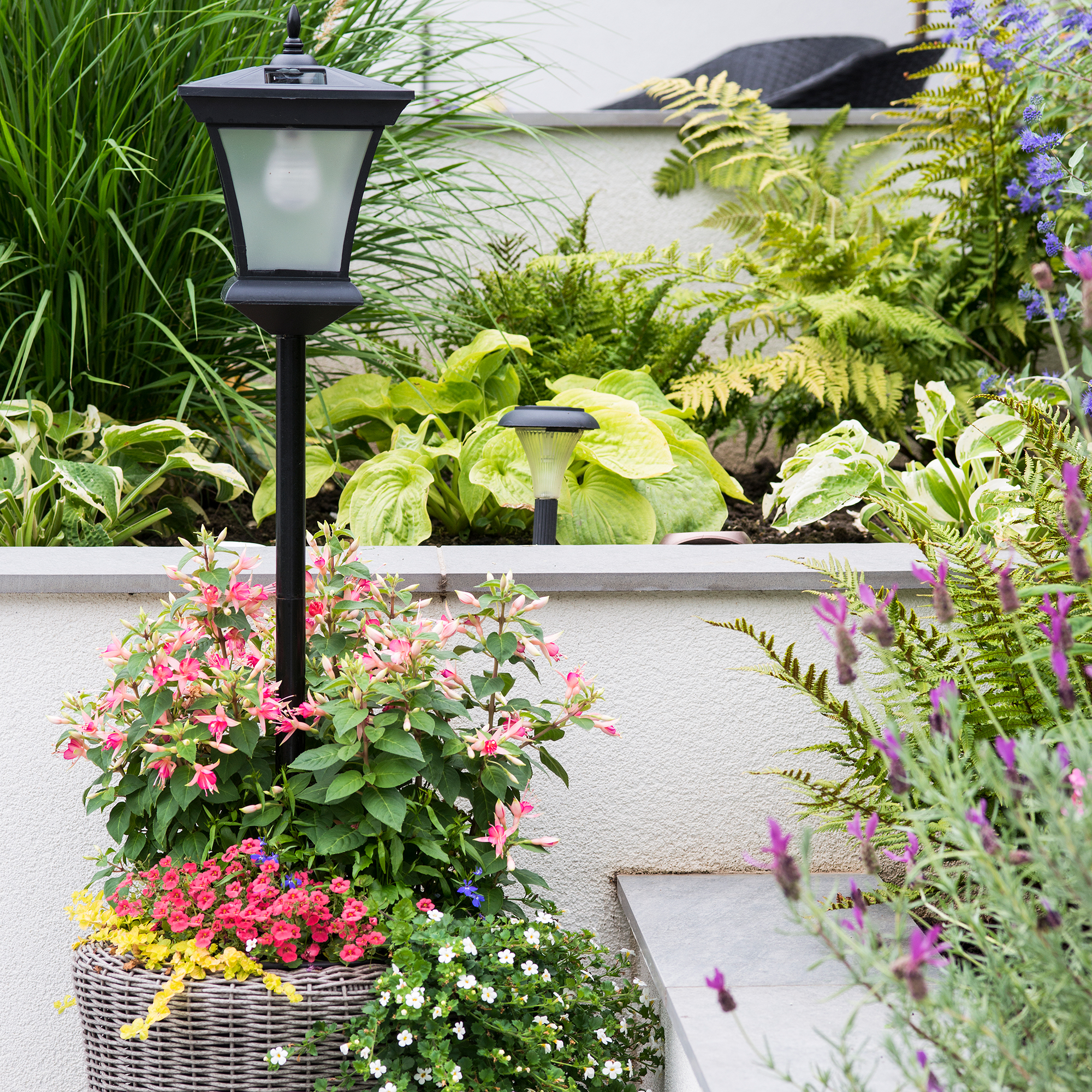
As well as growing plants up walls and fences, there is probably quite a bit of dead (AKA empty!) space in your garden. ‘You can get triangular planters and pots that clip into downpipes, enabling you to bring side walls and empty corners into your garden,’ Fiona affirms.
Or why not add window boxes or bridge planters to make use of every space when choosing small garden landscaping ideas. ‘You can also construct a bin store with a living roof or add one to your shed or garden room to expand your garden,’ Fiona continues. The options truly are endless.
3. Layer plants
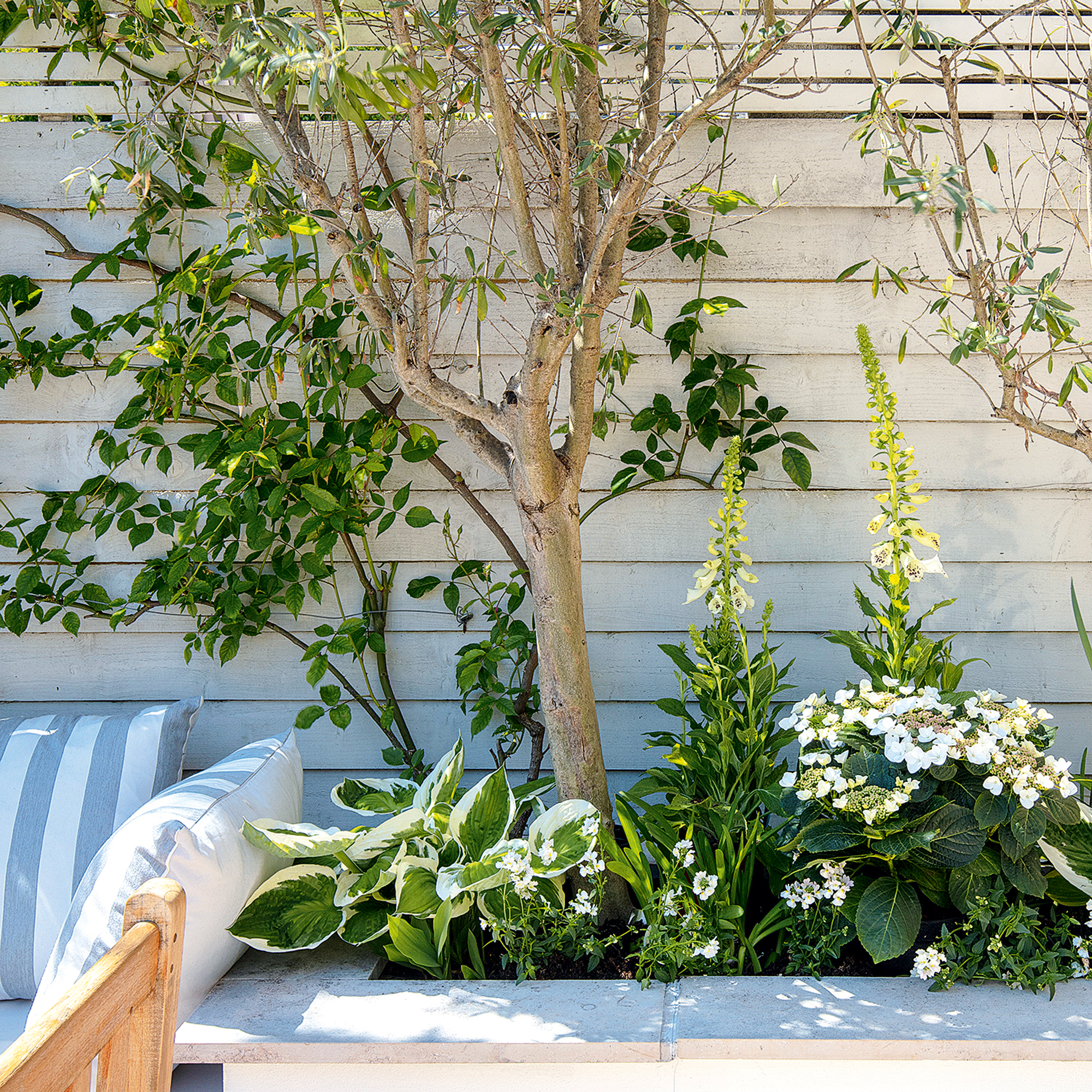
‘When arranging your plants, aim to strike a fair balance of heights, textures, and colours to optimise the visual appeal of your garden,’ Jamie advises. ‘Layering techniques can come in handy here, with taller plants being placed at the back and shorter ones being positioned near the front to create the illusion of depth.’
When planning your flower bed ideas, it's also worthwhile grouping plants with similar watering or sunlight needs together to make caring for them easier in the long run.
4. Employ light colours
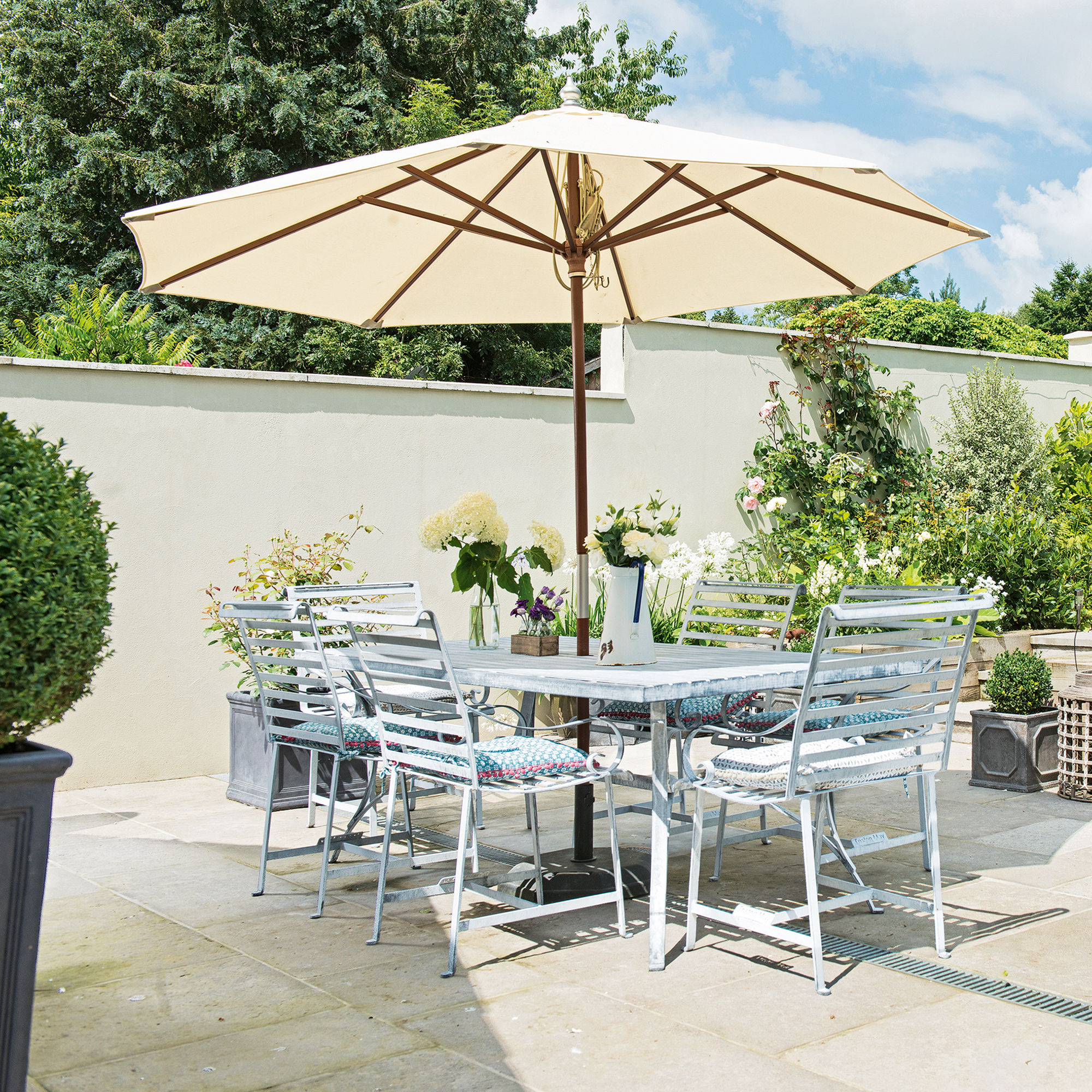
Just like in interiors, certain colours are more appropriate for small gardens as they help to make the space appear bigger. So take some time to think about your garden paint ideas before grabbing a paint brush.
‘Using light shades for paving, furniture and plants can help reflect and bounce light around your garden and create the illusion of a more open space,’ Tom Clifford, Landscaping Expert at Gardenstone, suggests.
5. Use alternatives for your lawn
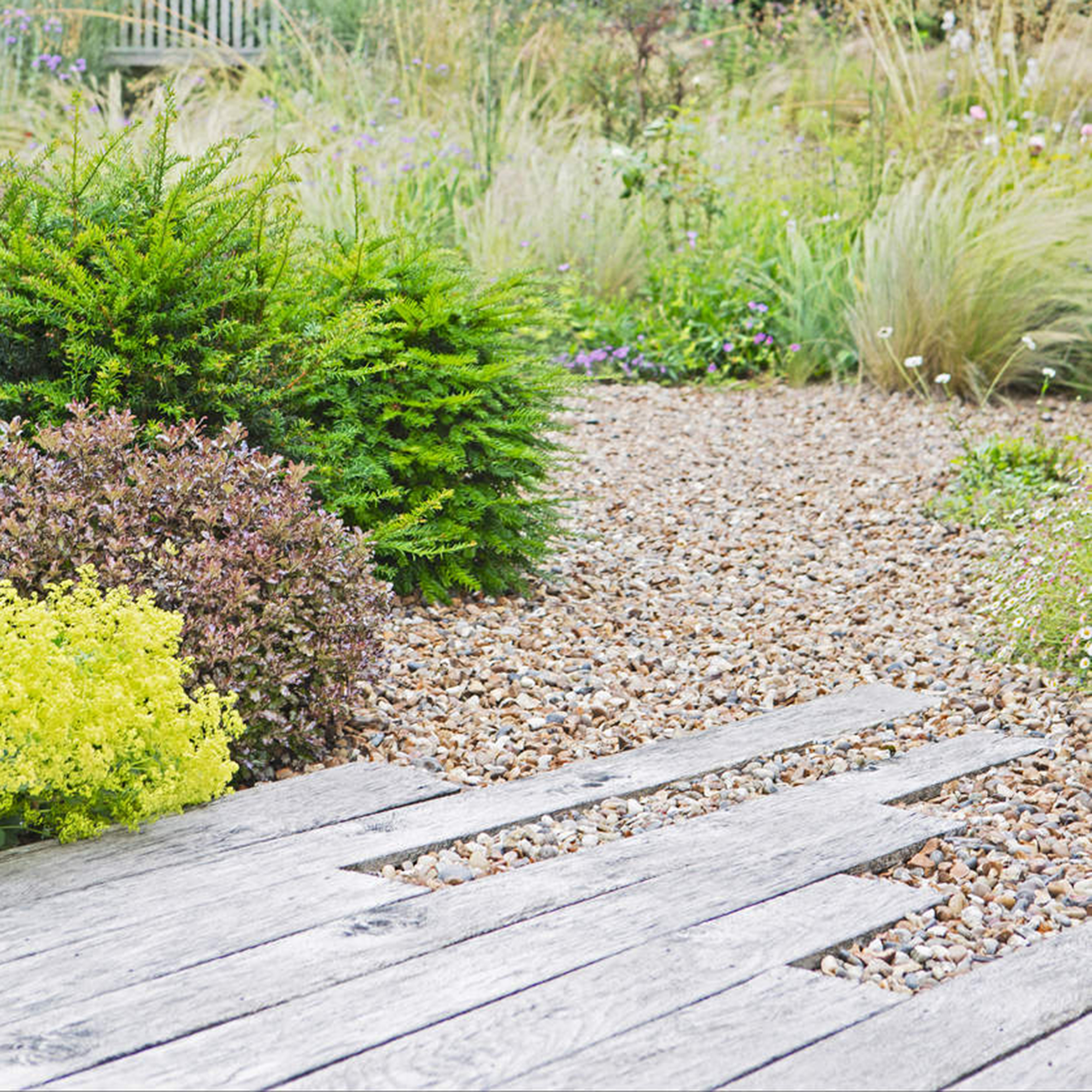
If you don’t have lawn ideas or grass in your garden – or don’t plan on adding any – this can actually be advantageous in a small outdoor space. According to Tom, ‘having a limited area of grass lawn can often make your garden appear smaller than it actually is.’
Instead, he recommends ‘using paving or gravel in your garden. This still allows you to incorporate greenery using pots and planters while ensuring that your garden feels more open.’ Plus, you have more options when it comes to moving plants around, depending on the weather or time of year. You also don’t need to worry about where to store a lawn mower or strimmer, particularly if you’re short on storage space, if you don’t have a lawn to maintain.
6. Reduce your lawn size
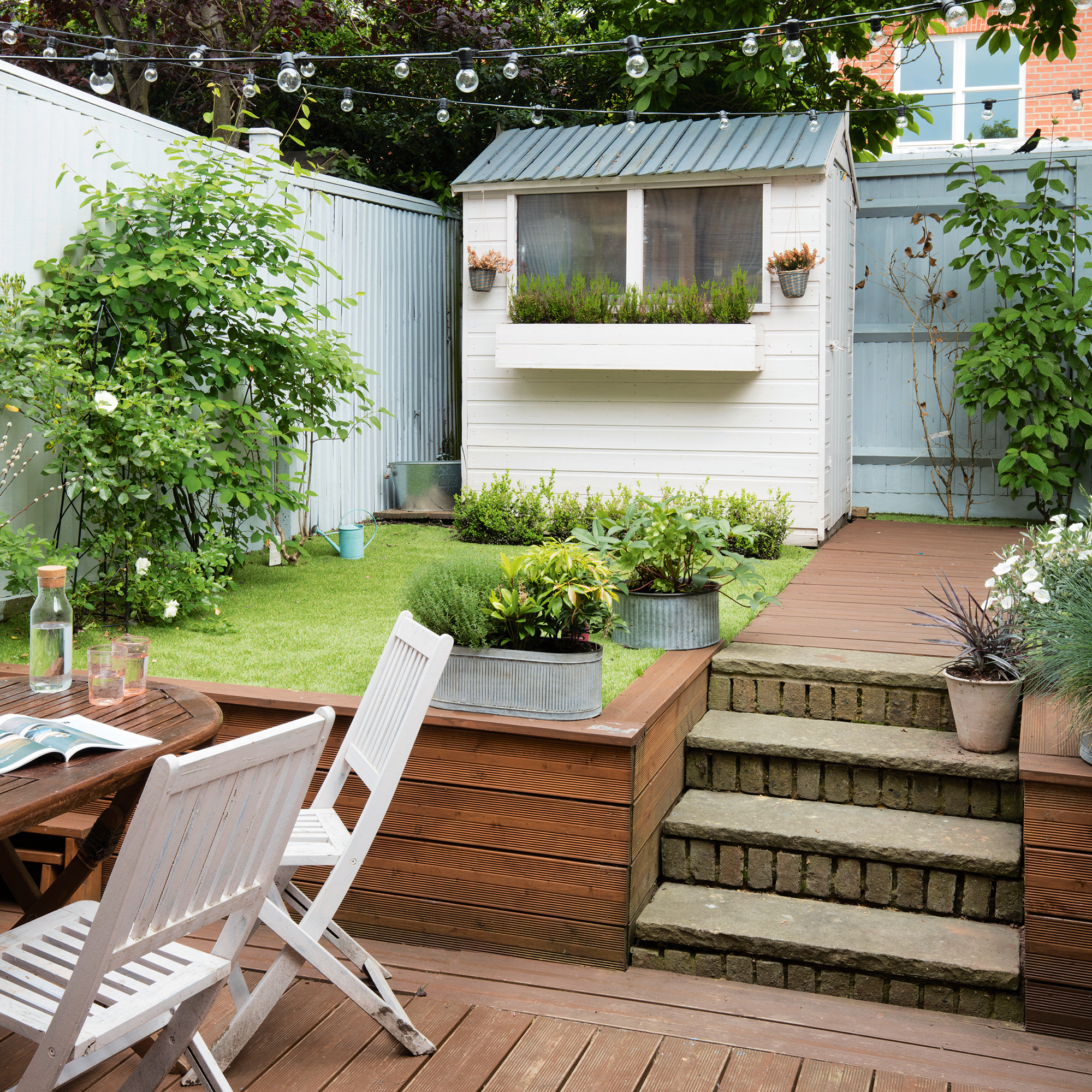
If you’re not ready to completely get rid of your lawn, you may want to consider reducing it slightly, as Fiona proposes. ‘If a flat lawn is dominating your small garden, try reducing its size. This will give you space to add more planting and create more interest.’
‘If your lawn is still making your garden look a bit one-dimensional, try changing its shape and add more interest by placing a flower bed or small tree in the middle. Or decorate it with a compact water feature idea or sculpture.’
7. Create different zones and areas of interest
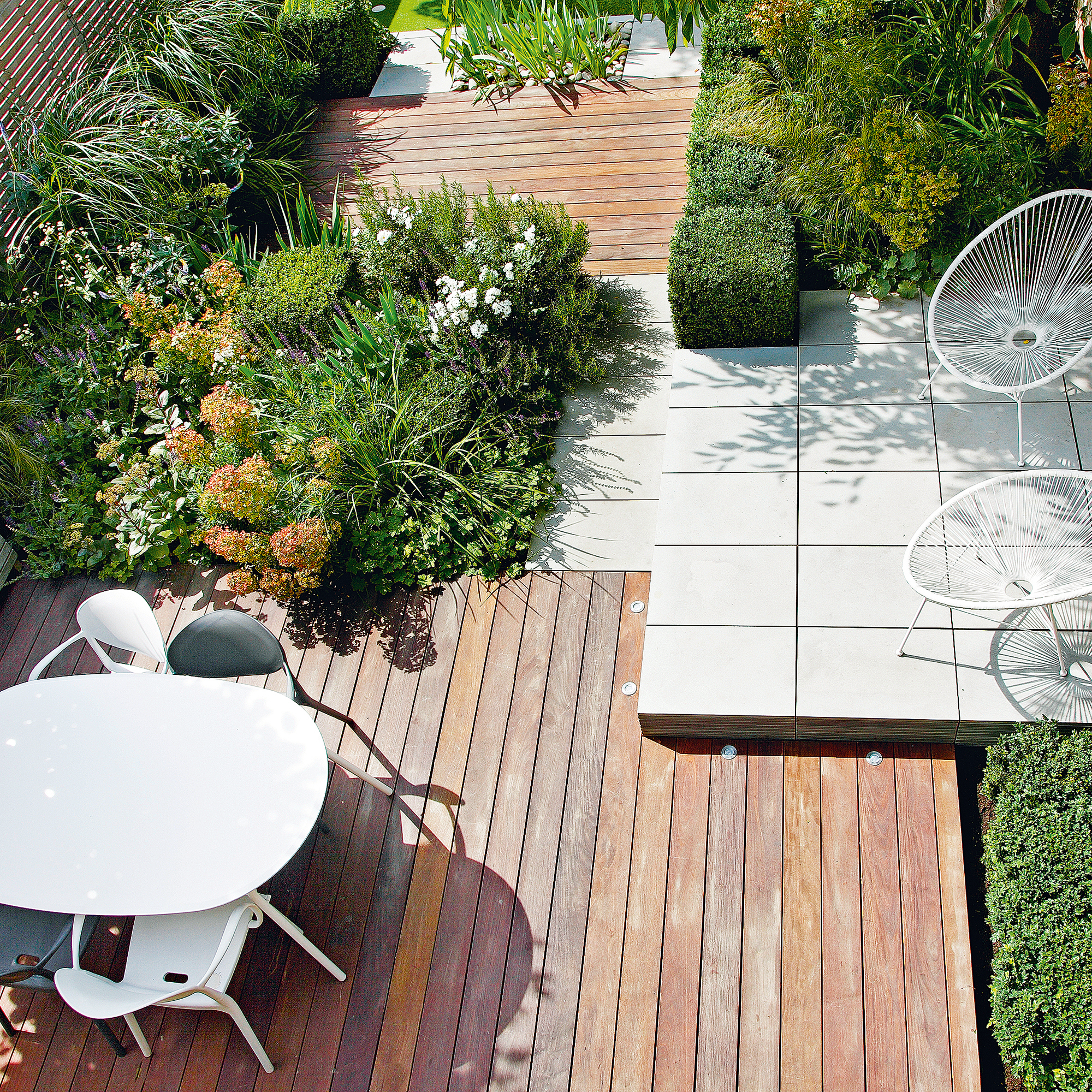
If you have no idea where to begin when it comes to your small garden landscaping ideas, splitting the garden layout up into separate zones or areas works especially well. Think of the different purposes that you need your garden to fulfil. For example, if you enjoy dining al fresco, you’ll need an outdoor dining space. For keen gardeners, space for planting or even creating your own small vegetable patch will be key.
You may have assumed that a smaller garden won’t have enough space for different zones but it’s all about using your outdoor space strategically to ‘organise the space effectively and make it appear larger,’ Glen affirms.
8. Use garden edging

Another way to define a small garden is by using garden edging. ‘This helps to create clean lines, stops plant beds from merging into one another and creates a polished look that helps to define your garden,’ explains Steve Chilton, LeisureBench’s Garden Expert. ‘You can try using materials such as bricks, stones, pebbles and even metal and plastic to make garden edging.’
‘For patios and pathways, go for budget-friendly options like gravel, mulch, or recycled pavers,’ Glen recommends. Additionally, this adds structure and prevents plants from spilling over into walkways.
9. Try curves and circles

Another way to automatically make a small garden feel bigger is by utilising curves and circles in your design. You can ‘create curved paths using materials like gravel, stepping stones, or bricks to give a small garden a more spacious and adventurous feel,’ Glen outlines.
While Fiona concurs that ‘adding curves and circles into your design can make a small space feel bigger and flow better. For instance, a circular seating area uses less hard paving and leaves more space for planting around the edge.’ Essentially, shapes that let your eye wander work best at creating the illusion of more space.
10. Create privacy with hedges
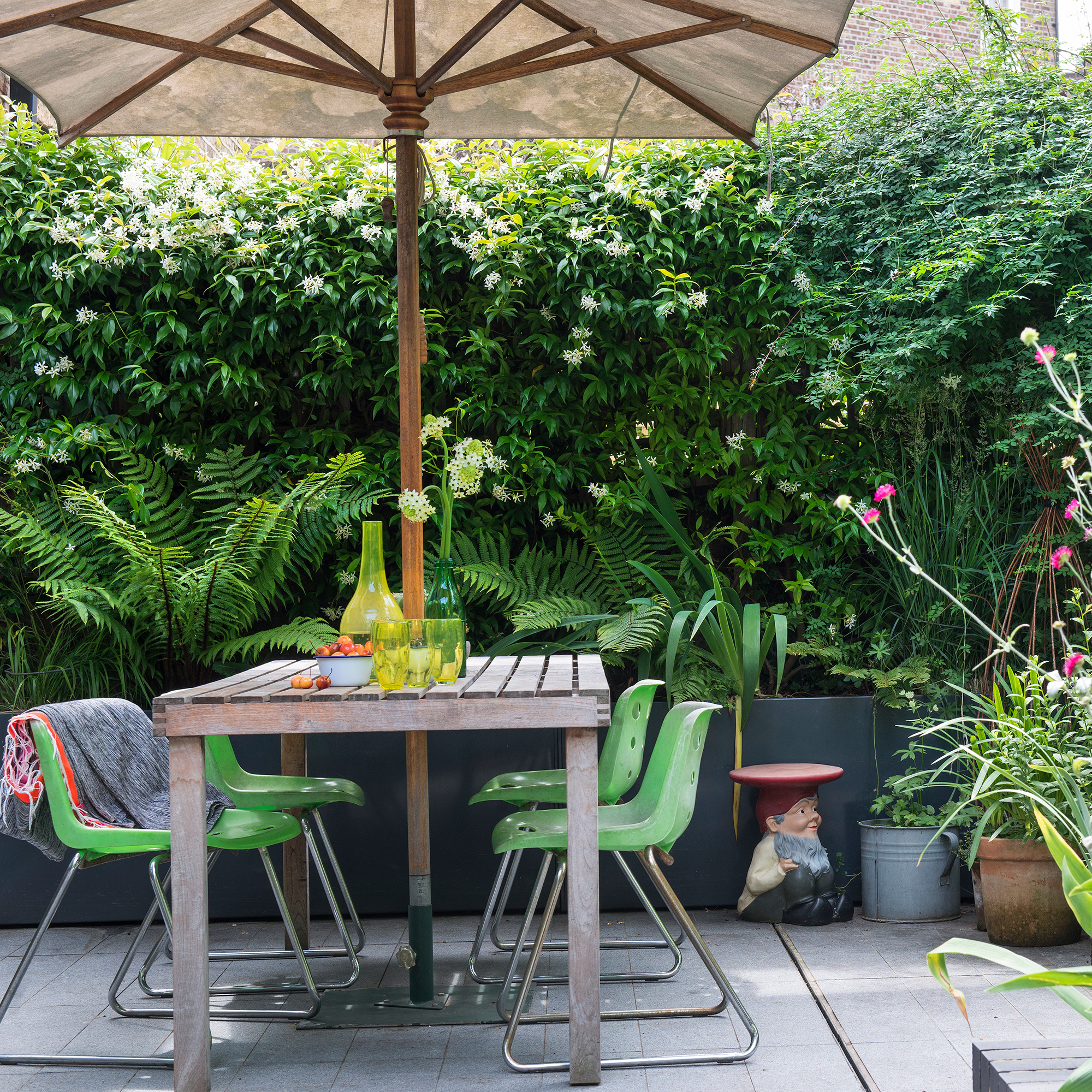
If your outdoor dining space happens to be overlooked by neighbours or passersby, you’ll no doubt have been looking for small garden screening ideas to try. And one in particular is a favourite of Tom Kitching, Executive Chairman at Henchman; hedges.
‘Not only do they add more greenery to your garden, but they also help with noise reduction, provide protection from wind, and offer shelter and food sources for all kinds of wildlife like bees, butterflies, hedgehogs and birds,’ he adds.
11. Add a focal point

One way to ‘spruce up your garden is with eye-catching focal points like water features, sculptures or vibrant planters to draw attention and create a captivating centrepiece,’ Glen says.
By giving your eye something to focus on, this really ties your all garden landscaping ideas together and makes it look much more thought out.
FAQs
How should I plan out a small garden?
Before you get carried away with landscaping, Glen recommends starting ‘with small steps, focusing on specific areas or tasks, rather than trying to do everything at once and feeling overwhelmed.’ This has the added benefit of helping you to manage your budget better and allowing you to gradually make improvements over time.
In addition to this, ‘it is a good idea to section your space by creating an even balance between planting and paving, this provides enough greenery while still allowing space for dining and relaxing,’ Tom explains.
‘Getting the balance right in a small garden will stop it looking sparse or cramped. Aim for a 50:50 ratio of hard surfaces such as paving and decking and soft surfaces such as lawn and borders,’ Fiona agrees.
How can I landscape my small garden on a budget?
If you’re on a tight budget or want a low-maintenance garden, the experts agree that gravel is an excellent choice for landscaping. ‘Using gravel is a cost effective way to landscape a small area,’ Tom admits. As well as being practical, ‘it also provides texture which can be more visually appealing,’ than grass.
Depending on your preference and style, there are plenty of gravel garden ideas to choose from, all of which are on-trend at the moment. Plus, ‘seating such as benches can go straight onto the gravel, meaning there’s no need to install a separate patio area,’ Fiona concludes.

Ellis Cochrane has been a Freelance Contributor for Ideal Home since 2023. Ellis has been writing about homes, interiors and gardens for four years now, with her also contributing to House Beautiful, Country Living, Expert Reviews, Real Homes and Stylist.
